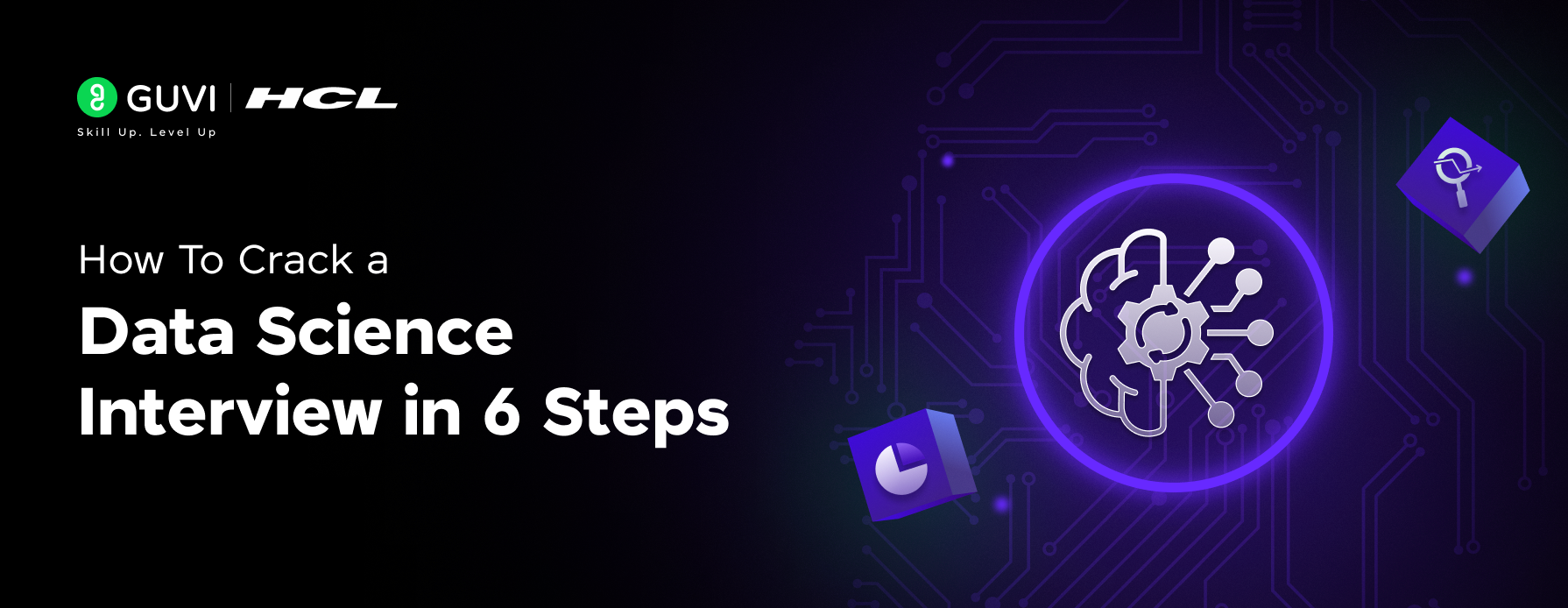
How To Crack a Data Science Interviews in 6 Steps
Feb 28, 2025 6 Min Read 3771 Views
(Last Updated)
Do you have a data science interview coming up? Not sure how to start your preparation? Well, you’ve reached the best place to receive expert tips on cracking a data science interview!
Data science roles are highly competitive, and preparing for them can be overwhelming, but don’t worry! In this blog, we will break down the 6 essential steps to help you navigate through the data science interviews with confidence.
Stay tuned till the end to get the complete roadmap and a well clear approach to acing your data science interview!
Table of contents
- What is Data Science?
- What are the roles of a Data Scientist?
- Steps to Crack a Data Science Interview
- Learn the Necessary Skills
- Programming Language
- Mathematics & Statistics
- Subject Matter Expert (SME)
- Data Analysis & Modeling
- Machine learning (ML)
- Resources
- Build Projects
- Do case study
- Polish your resume
- Prepare for Interview
- Attend Interview with confidence
- First Round – Online Assessment Test
- Second and Third Rounds – Technical Interviews
- Final Round – HR Round
- Conclusion
- FAQs
- Is a data science interview hard?
- How long does it take to prepare for a data science interview?
- Is DSA required for data science?
- Which language is best for data science?
- Do I need coding for data science?
What is Data Science?
By the name itself we can say that it is a science about data. Data science is a study of data to extract meaningful information and insights. Data science is used to provide a data driven solution to real world problems. It includes maths, statistics, machine learning(ML) and artificial intelligence(AI).
What are the roles of a Data Scientist?
A data scientist is a person who is well versed in data science. They are computer science disciplines. The role of a data scientist is as follows:
- Analyze the data and handle the missing data.
- Use algorithms and machine learning to find patterns and trends in data.
- Create predictive models to help guide business decisions.
- Ask and answer questions like what happened, why it happened, and what can be done with the results.
- Communicate their findings through reports, charts, and graphs.
In the next section, let’s dive into the steps to crack a data science interview with ease.
Steps to Crack a Data Science Interview
Whether you’re just getting started or looking for a refresher, these actionable tips will guide you toward success. By focusing on just six key steps, you’ll be well on your way to cracking a data science interview.
Learn the Necessary Skills
The first step in cracking a data science interview is to master the necessary skills for the role. If you already have a solid understanding of data science, it’s important to cross-check whether you’ve covered the essential skills listed below.
Programming Language
Programming languages are crucial for data scientists. Instead of focusing solely on traditional object-oriented programming languages, it’s important to prioritize languages used for AI implementation, such as Python, Scala, and Julia. These languages are more relevant to the tasks and tools you’ll work with in data science, particularly when it comes to machine learning and data manipulation.
Learn the fundamental concepts of programming languages such as variable declarations, functions, classes, objects, and other pillars of object-oriented programming.
Mathematics & Statistics
Mathematics and statistics are very important skills for a data scientist. These are the backbones of understanding the data. They provide tools and techniques to extract valuable information from complex data sets.
To excel in mathematics, focus on key concepts such as linear algebra, calculus, and probability theory. As for statistics, focus on Statistical theories such as hypothesis testing, regression analysis, and data distribution are essential for analyzing data and drawing meaningful conclusions.
Practicing is the best way to learn a new skill. Once you grasp the fundamental concepts in mathematics and statistics, learn how it is implemented in the programming language of your choice.
Subject Matter Expert (SME)
Becoming a subject matter expert (SME) in a specific industry or domain is a critical part of excelling in data science. As the next step of learning, focus on learning about domains.
Whether you’re working in healthcare, finance, e-commerce, or any other field, understanding the nuances of that domain helps you interpret data more effectively. It helps in asking the right questions about the data to analyze, and the insights to deliver that are most relevant to business needs.
Data Analysis & Modeling
The next important skill is data analysis and modeling. This involves data cleaning, exploration, processing, model building, and visualization. All the steps starting from data cleaning to visualization are crucial. Missing any steps will result in inefficiency of the model.
Learning tools like SQL, Pandas, and Scikit-Learn for data manipulation and model building is a must. Becoming proficient in these techniques will allow you to transform raw data into valuable business insights.
Machine learning (ML)
The last and very important skill is machine learning. Machine learning is a technique that uses algorithms to analyze data and make predictions, enabling systems to learn from patterns and improve over time. Gaining expertise in this area will help you build models that can predict outcomes and automate processes.
Focus on understanding the different types of machine learning algorithms such as supervised(trained on labeled dataset), unsupervised(trained on unlabeled dataset), and reinforcement learning and their applications. Additionally, it’s crucial to understand their real-world applications such as classification, regression, clustering, and recommendation systems, so you can choose the right approach for solving specific problems.
Resources
Learn all the necessary skills required for a data scientist in a single course at Guvi Zen Class. This course covers from Mathematics, statistics, EDA to Machine Learning algorithms. You will also gain experience from hands-on projects.
Build Projects
Once you have learned all the necessary skills, you can put your skills into practice by building projects. Data science projects will be different from other normal projects. These projects should focus on solving a real world problem. Building a data science project involves various steps:
- Define the Problem: As a first step, identify the business question or objective you want to address with your data science project.
- Data Collection: The second step is to gather relevant data from various sources, including databases or web scraping, depending on the project needs.
- Data Cleaning: Next, clean and pre-process the data by handling missing values, outliers, inconsistencies, and formatting issues.
- Exploratory Data Analysis (EDA): This step is to visualize and analyze the data to understand its characteristics, patterns, and relationships between variables using techniques like histograms, scatterplots, and correlation matrices.
- Feature Engineering: In this step, you will create new features from existing data that might be more predictive for your model.
- Model Building: For building a predictive model, select appropriate machine learning algorithms based on your problem and train models on the prepared data.
- Model Evaluation: After building the model, assess the performance of the models using metrics like accuracy, precision, recall, and F1-score on a test dataset.
- Deployment: The last step is to integrate the best performing model into a production environment where it can be used to make predictions on new data.
Try to build projects on various domains such as health care predictions, email classifications etc to showcase your expertise across the domains.
Do case study
The next step is to do case studies. Case studies are very important in data science. They provide a practical way to learn how data science techniques are applied in real-world scenarios, allowing students and professionals to understand the complexities of a problem, the steps involved in solving it, and the potential pitfalls to avoid, essentially bridging the gap between theoretical knowledge and practical application. Here are some reasons why case studies are important:
- It demonstrates real world examples.
- It is used to develop critical thinking skills.
- It improves problem solving skills.
- It is used to stay up to date with data science techniques.
After reading a reasonable amount of case studies, you are now ready to explore the opportunities as a data scientist.
Polish your resume
Preparing your resume is a mandatory part of getting a job. A resume is a summary of your qualifications, experience, skills and education. A short and simple resume will tell you a lot about you. Spending extra time crafting your resume is worth it. If you are early in your career, put more focus on your projects and skills. Most recruiters prefer a single page resume. Try to summarize your accomplishments in one or two sentences and mention it in bullet format.
Be sure to include the key data science skills you’ve mastered, such as programming languages, machine learning, statistics, and data analysis, which were mentioned earlier. Additionally, feature at least three relevant projects or case studies that showcase your practical experience and problem-solving abilities in data science.
In today’s competitive job market, it’s essential to create an ATS-friendly resume. An Applicant Tracking System (ATS) is used by recruiters to filter candidates based on specific keywords related to the job description. To increase your chances of getting noticed, tailor your resume to include those keywords. A good ATS-friendly resume typically scores above 80 out of 100.
Prepare for Interview
The final step before stepping into the interview is thorough preparation. Begin by reviewing the frequently asked questions related to the skills you’ve learned in the first step, such as programming, mathematics, statistics, and machine learning. Be ready to explain concepts, solve problems on the spot, and demonstrate your practical knowledge.
In some data science interviews, interviewers may ask you to solve data structure-related questions as well as one or two coding challenges. The questions may be focused on fundamental data structures such as arrays, linked lists, trees, and graphs. The coding problems you face will often be tied to machine learning, statistics, and mathematics.
Additionally, prepare for behavioral questions, which assess your soft skills and how you approach problem-solving, teamwork, and decision-making. Interviewers will want to understand how you handle challenges, collaborate with others, and adapt to new situations. Practice your answers to common behavioral questions using the STAR method (Situation, Task, Action, Result) to ensure you provide structured and impactful responses.
Attend Interview with confidence
The final step is to attend the interview with confidence. Data science interviews typically consist of 3 to 4 rounds, each designed to assess different aspects of your skills and experience. Here’s what you can expect at each stage:
First Round – Online Assessment Test
The initial round is usually an online assessment that includes multiple-choice questions (MCQs) based on the concepts you’ve studied, such as programming, machine learning, statistics, and mathematics. You can also expect one or two coding challenges related to basic data structures (like arrays, linked lists, or trees). The goal of this round is to quickly assess your fundamental knowledge and problem-solving ability.
Second and Third Rounds – Technical Interviews
In these rounds, you’ll dive deeper into coding problems, often focusing on more challenges related to ML algorithms and statistics. Be prepared to write solutions, explain the logic behind your code, and discuss your projects, skills, and the specific tools you’ve used.
If you’re an experienced professional, expect questions that dig deeper into your previous projects and work experience. For freshers, the focus will likely be on your college syllabus and the projects listed on your resume. Be ready to explain the concepts you learned during your academic journey and how they relate to the projects you’ve worked on.
The interviewer will likely want to understand how you approach problem-solving and how well you can apply your knowledge to real-world data science tasks.
Final Round – HR Round
The final round typically involves HR questions, it may include a mix of HR and technical questions, depending on the company. Sometimes, HR may ask case studies related questions too. In this round, you’ll be asked behavioral questions to assess your problem-solving, decision-making, teamwork, and communication skills.
To perform well in the interview, focus on showcasing your technical knowledge, problem-solving abilities, and clear communication. Walk into the interview with confidence, stay calm, and remember to explain your thought process clearly.
Conclusion
In conclusion, by learning the key skills for data cleaning, processing, exploring, predicting, and visualizing, you’ll be able to easily answer questions related to these topics in your interview. The more you practice and apply what you’ve learned, the more confident you’ll become.
With consistent effort, you’ll be prepared to tackle any challenge that comes your way. Stay focused and keep learning, you’ll be ready to ace your data science interview and move one step closer to your career goals. Good luck!
FAQs
A data science interview can seem tough, especially if you’re new to the field, but it’s all about preparation. The more you practice the core skills like coding, statistics, and machine learning, the more confident you’ll feel.
The time it takes really depends on where you’re starting from. If you’re new to data science, it could take a few months to get a good grasp on the core concepts like programming, statistics, and machine learning.
Yes, Data Structures and Algorithms (DSA) is important for data science, especially for machine learning and data engineering. DSA helps with data management, analysis, and problem solving. It can also help you write efficient code. You can expect DSA based coding challenges during the interview.
The most popular and widely used language for data science is Python. It’s beginner-friendly, has a rich ecosystem of libraries (like Pandas, NumPy), and is great for tasks like data cleaning, analysis, and machine learning. For those working on large-scale systems, Scala and Julia are gaining popularity as well, especially for machine learning and high-performance tasks.
Yes, coding is an essential skill for data science. Being comfortable with coding is crucial for tasks like data manipulation, building machine learning models, and automating processes. Python and R are the most commonly used programming languages in data science, and they have extensive libraries to make your job easier.


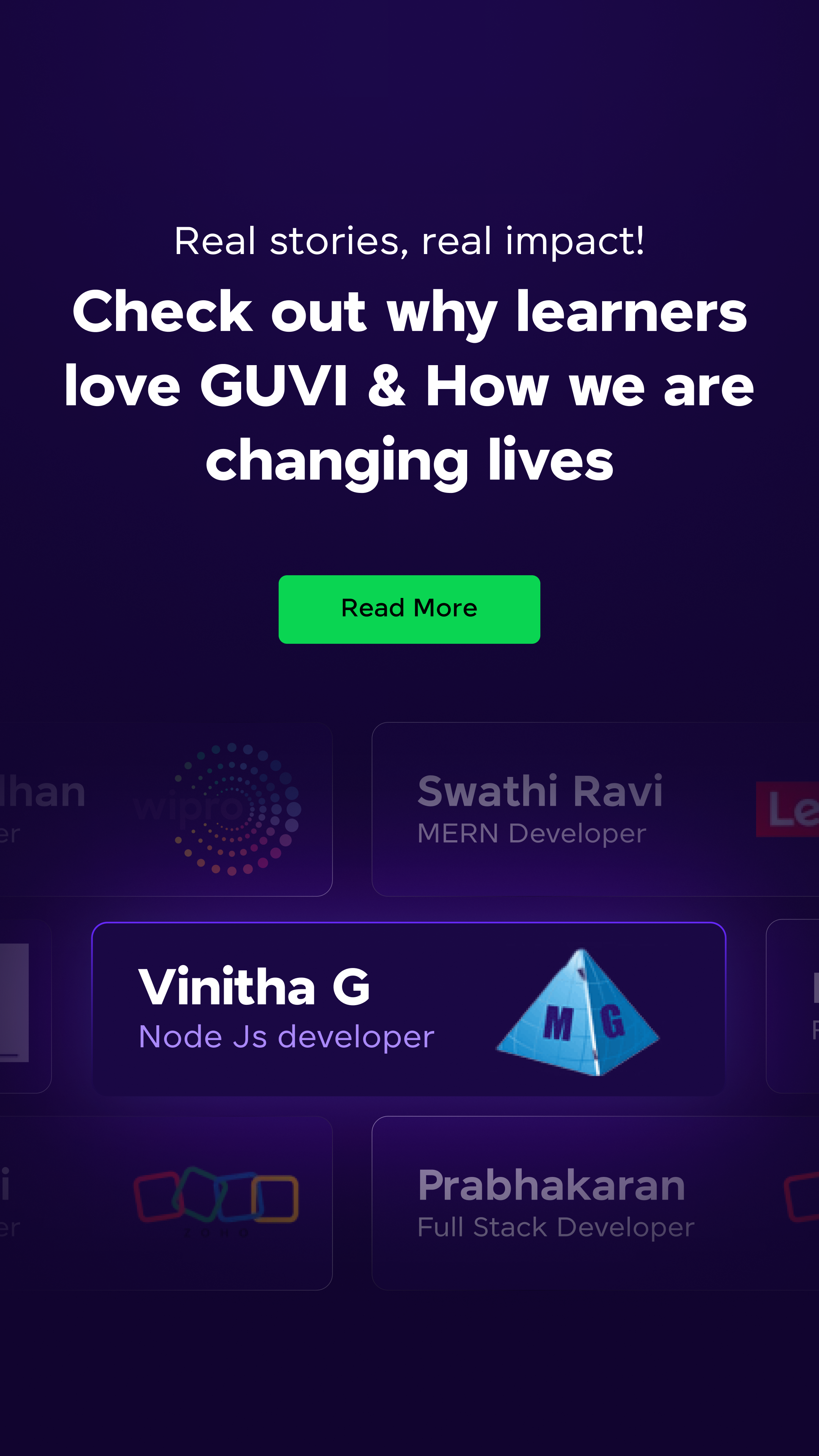














![Top Data Science Programming Languages All Beginners Must Know [2025] 8 data science programming language](https://www.guvi.in/blog/wp-content/uploads/2025/06/Feature-Image-3.png)
![Top 40 Data Science Interview Questions for Freshers [2025] 9 data science interview questions for freshers](https://www.guvi.in/blog/wp-content/uploads/2025/06/Top-40-Data-Science-Interview-Questions-for-Freshers-2025.png)
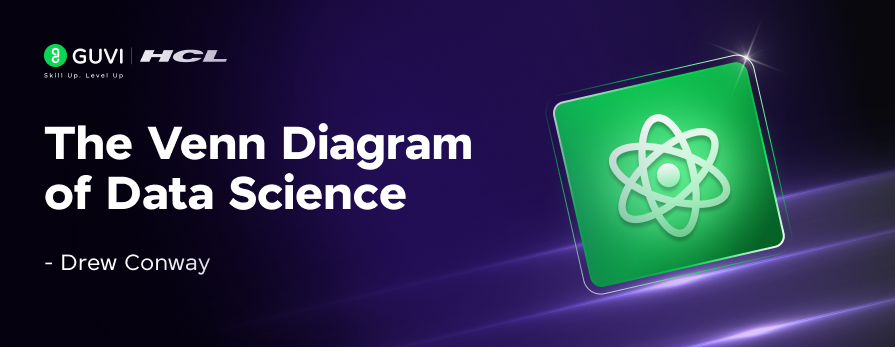
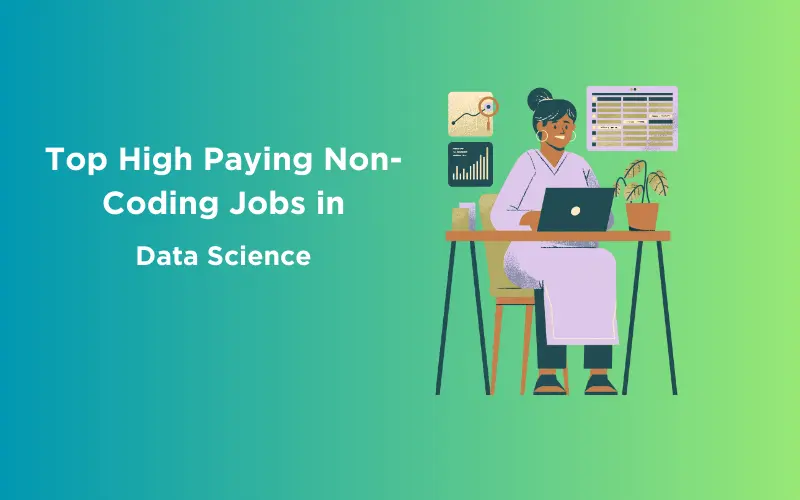

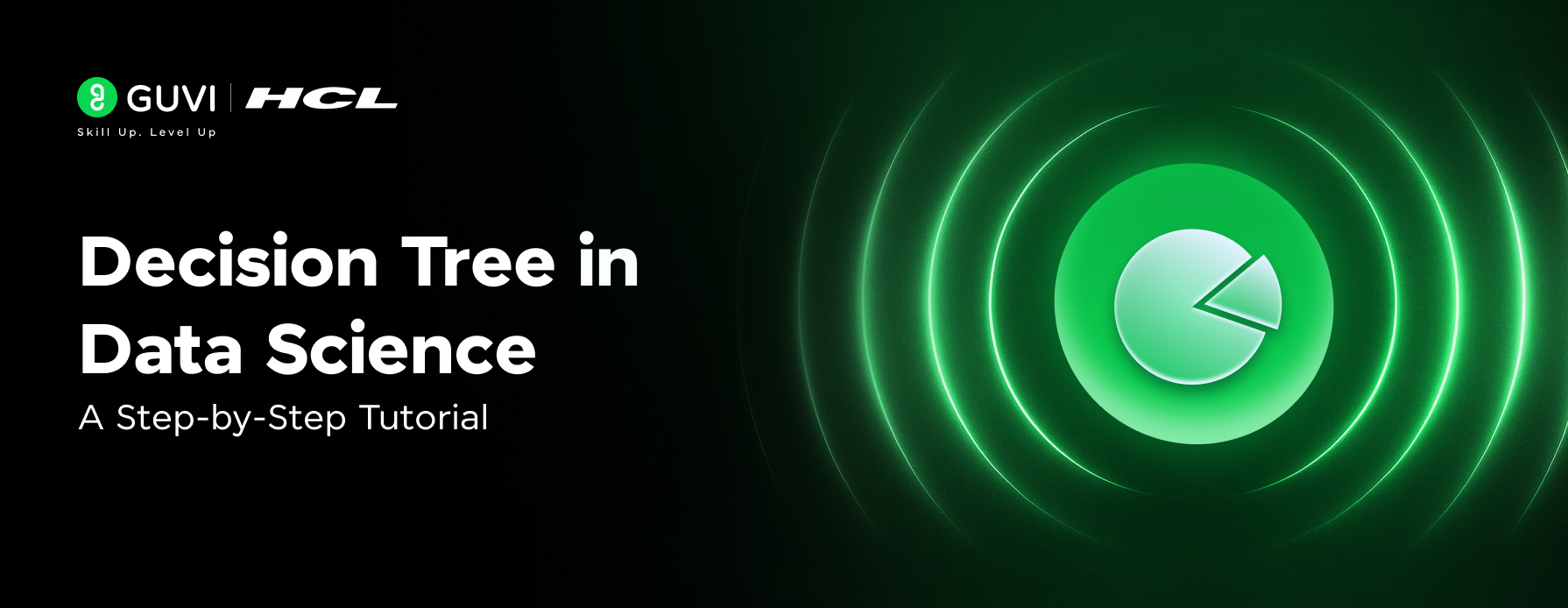
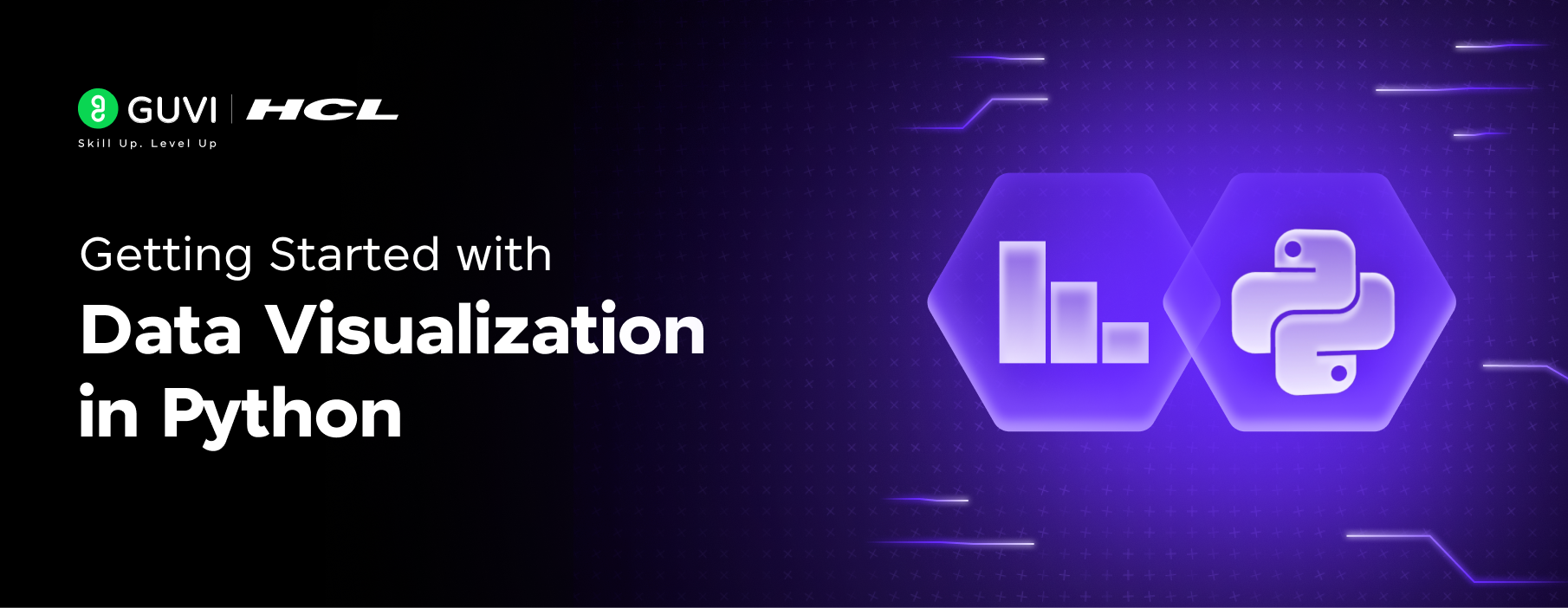

Did you enjoy this article?